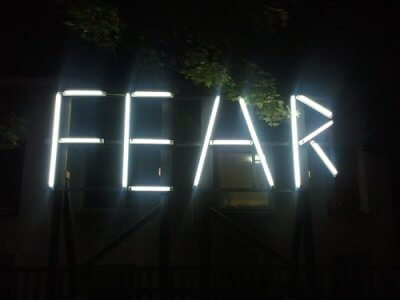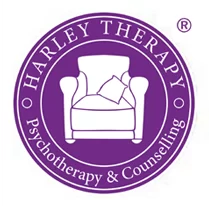Exposure Therapy for Anxiety – Could it Work for You?

photo by: Alexandra Gorn
by Andrea M. Darcy
Exposure therapy might sound like you are about to be left out in a snowstorm. But rest assured exposure therapy for anxiety is instead a practical psychotherapeutic technique.
What is exposure therapy?
It’s an approach used by therapists to help clients deal with the things they fear, as well as the emotions, reactions, and life choices that their fear and anxiety creates.
Exposure therapy aims to safely expose you to what you perceive as dangerous, in order to help you manage, diminish, or entirely eradicate your fearful reaction.
Does it work for anxiety disorders?
As well as generalised anxiety (GAD), exposure therapy can be used to treat the entire family of anxiety disorders, including:
What is the goal of exposure therapy for anxiety?
There are four main theories to explain how exposure therapy works. They are called extinction, self efficacy, habituation, and emotional processing. And behind these theories we find a breakdown of the goals of this therapeutic approach.
1. Extinction.
This is a theory suggesting that fear is a conditioned response. Somewhere along the way we learned it. For example, we are stung by a jellyfish as a child, then are terrified of all water, even pools.
The goal is to challenge then decrease your mental assumption that sees you immediately assume a bad outcome (water=pain), or believing that avoidance is the only way to feel better.
2. Self efficacy.
The belief here is that when we are afraid or anxious, we underestimate our own capacities to manage and deal.
The goal of exposure therapy for anxiety is to help you see how capable you are of actually facing the fear and feelings that arise.
3. Habituation.
This is the idea that the more we do something, the less the effect. The more we swim in cold water, the less it feels cold.
The goal is to get you used to what you fear, until its effect is lessened.
4. Emotional processing.
This theory suggests that fear gets stored by a process of stimulus / response / meaning. For example, public speaking (stimulus) makes our heart pound (response), so we assume it means we are bad at it (meaning).
The goal here is to help you have newer, more balanced thoughts and feelings about the things you fear. You recognise you are choosing the meaning and can re-choose, which changes your response.
But it sounds scary

By: dryhead
Does exposure therapy for anxiety all sound a little bit too, well, George Orwell, ‘1984’, rat-in-the-face to you? Don’t worry.
Exposure therapy for anxiety is not aiming to overwhelm you and shock you into letting go of fear. Unless you and your therapist decide otherwise, exposure is progressive, not sudden.
Your therapist is working to understand the unique mix of thoughts, feelings, and physical responses that the thing you fear creates, and the ways you then try to ‘escape’ the fear. And they then work the break this pattern.
If at any time it’s too much for you, then you can say so and ask to stop.
The different ‘levels’ of exposure therapy
That’s not to mean that over time you might not end up facing the fear head on at a high level. Or that, again, you might decide together with your therapist that in your case, the best route for you is ‘full on’ immediately.
The pinnacle of exposure speed is referred to as ‘flooding’. This would mean facing your biggest fear first, head on. The idea here is that then you ‘flood’ yourself with your biggest fear response and then by default diminish your entire fear ‘hierarchy’. So if you are afraid of, say, people looking at you, you wouldn’t work on a scenario of people on the tube glancing at you but would go right to a scenario of standing in front of an audience giving a speech.
‘Graded exposure’ is the opposite and more common approach. You rank your fears and start from the bottom up.
The different ways to approach exposure therapy

By: Frank Boston
There are also different ways to ‘expose’ you to your fear.
Let’s take the case of a person who has anxiety about spiders.
Imaginal exposure
This would see the client simply imaging a spider, as vividly as they can. Then the therapist works with the feelings and thoughts this visual creates for the client.
Interoceptive exposure
This works with sensations. If every time anything at all brushes this client’s arm the client panics and thinks of spiders, the therapist might ask the client to run their fingers along their arm, or otherwise create this physical sensation.
Virtual reality exposure
This is a newer branch of the therapy which is as it sounds. Virtual reality goggles are used to expose you to a virtual form of what you fear. So the client would be watching spiders scuttle along a floor in a virtual world.
Don’t worry if your therapist doesn’t offer VR. While it’s interesting, and was shown in one study on veterans with PTSD to have an equal effect to regular exposure therapy, it wasn’t found to provide any special benefit.
In vivo exposure
This would be the most aggressive form of exposure therapy for anxiety, where you actually face what you fear in real time. So you’d be directly looking at a spider in a cage, or participating in a workshop where you handle one.
Online therapy has made this sort of exposure therapy something that can be done with your therapist at hand. For example, you can have a session where you visit a zoo, taking your therapist with you, so to speak, over a platform like FaceTime on your mobile phone.
Is exposure therapy a form of CBT?
It would be a lot less confusing if this was instead called the exposure ‘technique’ over therapy.
CBT therapists do use exposure therapy in their work with clients. But it’s not just CBT therapists who work with exposure therapy. Therapists from other training backgrounds can also take add-on courses in exposure therapy tools. For example, dialectical behaviour therapists (DBT) can train in a ‘prolonged exposure protocol’ for working with clients with PTSD.
So while you’ll find it being said that “exposure therapy is a form of CBT’, it’s not really a ‘form’ of CBT but a technique, ingredient, or ‘approach’ used CBT (and other therapies). You can’t, for example, find an ‘exposure therapist’, you can find a CBT therapist, DBT therapist, or integrative therapist who offers exposure therapy.
And note that not all CBT therapists like to focus on exposure when working with clients. It’s even a controversial approach for things like PTSD, despite the positive evidence it works. So if you are set on an exposure focus it would be best to make sure the therapist you book is willing, not just assume that booking CBT therapy means access to all forms of exposure therapy.
I want help with anxiety but just don’t think this is for me
Then you might want to try cognitive behavioural therapy without the exposure approach. CBT is also evidence based to help with anxiety.
A review of recent research on CBT and anxiety looking at the cognitive tools it offers versus the exposure ones found that they were both equally effective for treating anxiety, including OCD and PTSD. In the case of social anxiety, a focus on cognitive tools was actually found to be better than exposure therapy.
Or work with a therapist that uses mindfulness. Mindfulness lowers anxiety as it trains your mind to stay with the present, instead of being caught up with panicked thoughts about the future.
Clinical hypnotherapy is also useful for anxiety, and if your anxiety is connected to PTSD, eye movement desensitisation and reprogramming (EMDR) is recommended.
Ready to face the fear, master your anxiety, and gain back control of your life? Contact a Harley Street clinic where we can connect you with a highly regarded team of top mental health experts in central London or online. Or use our booking platform to source affordable online therapy and UK-wide registered therapists.
 Andrea M. Darcy is a mental health and wellbeing expert and writer. She loves to take difficult concepts and make them easy for anyone to understand. Find her on Instagram @am_darcy
Andrea M. Darcy is a mental health and wellbeing expert and writer. She loves to take difficult concepts and make them easy for anyone to understand. Find her on Instagram @am_darcy




